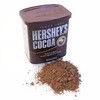Final Exam Flashcards
(237 cards)
Decomposition Reaction
One reactant breaks down into two or more elements.
AB –> A + B

Is the solution unsaturated, saturated, or supersaturated, if I have 30 g of Potassium Nitrate in 100 g of Water at 30 C?

Unsaturated

Quantum of Energy
Absorbed when an electron moves from its ground state to its excited state.
Period
Horizontal row on the periodic table.

What is the percent composition of oxygen in CuSO₄?
mass of CuSO₄= 63.546 + 32.065 + 4(15.999) = 159.7 grams
Mass of oxygen = 4(15.999) = 64 grams
(64/159.7) x (100%) = 40.1. %O
A compound contains 21.6 g of silver and 3.21 g of sulfur, what is the percent composition?
21.6/(21.6+3.21) = 87.1% Ag
3.21/(21.6+3.21) = 12.9%S
Fusion

Solubility Curve
Used to determine the mass of solute in 100g (100ml) of water at a given temperature.

HCl + Zn →
2HCl + Zn →ZnCl₂ + H₂ Single Replacement
What are both of the symbols for each of the following types of nuclear decay:
Alpha, Beta, Gamma

Ductile
Capable of being drawn out into a wire or thread.

Weak Acid
Weak acids are not fully ionized or dissociated.

To convert a number less than 1 to scientific notation?
the original decimal point is moved n places to the right, and the resulting number is multiplied by 10^-n.

Turning Standard Notation into Scientific Notation
If the number is greater than 1, the exponent will be positive.
If the number is less than 1, the exponent will be negative.

Scientific Notation Example
Scientific notation (exponential notation) represents very large or very small numbers as powers of ten.

Write a chemical equation from the following word equation:
Magnesium reacts with aluminum chloride to form magnesium chloride and aluminum.
3Mg + 2AlCl₃–> 3MgCl₂ + 2Al
Charge of Group 16 or 6A (O,S, Se, Te):
Charge: 2-
Convert 71,200 inches to miles.
1 ft = 12 inches
1 mile = 5280 feet

Atomic Mass Number
Also known as the Mass Number or Atomic Mass.
What do significant figures show?
Precision
Metals
To the left side of the periodic table (left of the zig zag line).
Usually, solids at room temperature.
Good conductors of heat and electricity.
High melting and boiling points.
Malleable.
Ductile.

In the equation:
4Al + 3O₂→ 2Al₂O₃,
how many moles of Al₂O₃will be produced if there are 3.75 moles of O₂?
- 75 moles O₂ x (2 moles Al₂O₃/ 3 moles O₂) =
- 50 moles Al₂O₃
Anion
Negatively charged Ions. Anions are negatively charged because they have gained an electron(s) (electrons are negative). In general, anions are nonmetals.

Charge of Group 1 or 1A (H, Li, Na, K, Rb, Cs):
Charge = 1+










































































































